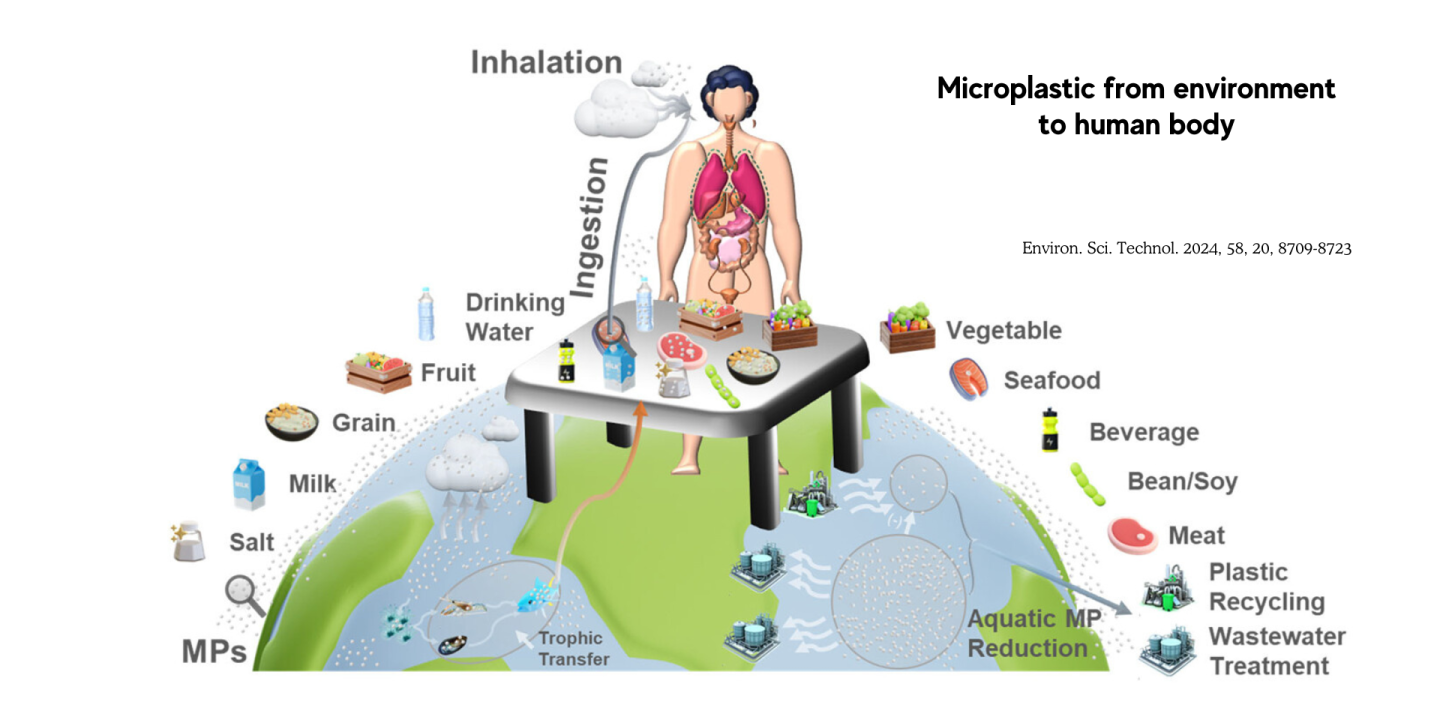In the last few decades, plastics have become a fundamental part of human activity, with their production increasing 240-fold. While their versatility and low cost have brought numerous benefits, plastics also present significant environmental challenges, particularly in the form of macro plastic litter and microplastics (MPs). These tiny particles, less than 5 millimeters in size, have emerged as pervasive environmental pollutants, infiltrating air, water, and soil systems, and posing threats to ecosystems and human health.
The Spread and Impact of Microplastics
Microplastics are pervasive, found in air, water, and soil. They enter the food web and contaminate species that humans consume. Studies have shown that MPs are present in foodstuffs such as table salt, seafood, meat, and drinks. The presence of MPs in these food items poses a direct threat to human health. A recent investigation highlighted that individuals with inflammatory bowel disease had 50% more MPs in their feces compared to healthy individuals, indicating a potential link between MP exposure and health issues.
The infiltration of MPs into the environment undermines several United Nations Sustainable Development Goals (SDGs), including SDG 14 (Life Below Water) and SDG 15 (Life on Land). The potential health impacts also challenge SDG 3 (Good Health and Well-being). As MP levels are projected to surge by more than 50% by 2040, addressing both their presence and root causes has become an urgent research need.
Pathways of Microplastic Uptake
Human exposure to MPs occurs primarily through dietary ingestion and air inhalation. Dietary MPs are accumulated in foodstuffs and result from plastic use in food and drink production, processing, and packaging. Airborne MPs, on the other hand, originate mainly from the abrasion of plastic materials, such as those in tires, and from aquatic plastic particulates that become airborne. Mismanaged plastic waste runoff from landfills and open dumping sites significantly contributes to aquatic MPs, which then enter water systems and degrade into smaller particles.
Once in the water, MPs are dispersed by currents and air, eventually entering the food chain. Aquatic organisms, such as phytoplankton and zooplankton, ingest these particles, mistaking them for prey. These organisms are then consumed by larger species, including commercial fish and other seafood, leading to biomagnification of MPs along the food chain and ultimately entering the human diet.
Regional Variations in Microplastic Exposure
The level of MP exposure varies across regions, influenced by local economies, industrial development, and food processing technologies. For instance, MPs in table salt from industrializing countries like Indonesia are around 100 times higher than in the U.S. Airborne MPs also show significant regional differences, with outdoor dust in Vietnam containing over 800% more MPs than in Japan. These variations highlight the need for localized strategies to mitigate MP exposure.
Industrial development shapes regional economies and influences waste management practices. Effective waste management and recycling systems are crucial to reducing MP pollution. Technologies such as air-flocculation, membrane separation, chemical coagulation, and biochemical degradation can remove over 70% of MPs from water. However, MP removal from soil remains limited due to the chemical inertness of MPs, particularly those made from polyolefin materials like polyethylene and polypropylene.
Global Efforts and Local Actions
The United Nations Environmental Programme (UNEP) emphasizes global collaboration in waste management to prevent MP generation and exposure. Current practices often remain localized, lacking a comprehensive understanding of the spatial variability of plastic pollution. Mapping MP uptake globally can provide insights into regional differences and inform both local and international measures to reduce MP pollution.
A recent study mapped MP uptake from air and diet across 109 industrialized and developing countries, offering technology and policy insights for reducing human exposure. The study found that rapidly industrializing countries, such as Indonesia, Malaysia, the Philippines, and Vietnam, topped the global list for MP uptake, primarily due to high seafood consumption. These regions require measures to minimize MP content in foodstuffs and improve waste management practices to align with SDG 6 (Clean Water and Sanitation) and SDG 9 (Responsible Consumption and Production).
Future Directions
To effectively address the growing issue of MP pollution, several strategies are recommended:
- Reduce Single-Use Plastics: Phasing out single-use plastics and adopting biodegradable alternatives can significantly reduce MP generation.
- Improve Waste Management: Enhanced recycling and waste management systems are essential to capture and recycle more plastic waste.
- Innovate Packaging Solutions: Developing and adopting innovative, degradable packaging materials can help minimize MP release during food processing and packaging.
- International Collaboration: Global efforts, including technology transfer and international agreements, are crucial for managing plastic pollution effectively.
Conclusion
Microplastics present a significant environmental and health challenge, with their pervasive presence in air, water, and soil systems posing risks to ecosystems and human health. Addressing this issue requires a comprehensive understanding of MP sources, pathways of exposure, and regional variations. By mapping MP uptake and implementing targeted strategies, we can reduce the impact of MPs and move towards achieving the United Nations Sustainable Development Goals. Collaborative efforts, both local and global, are essential to mitigate the persistent rise of MP pollution and protect the planet for future generations.
Other Topics: Medicine and Health Science, Natural Science, Agricultural Science, Engineering & Technology, Social Sciences & Humanities

